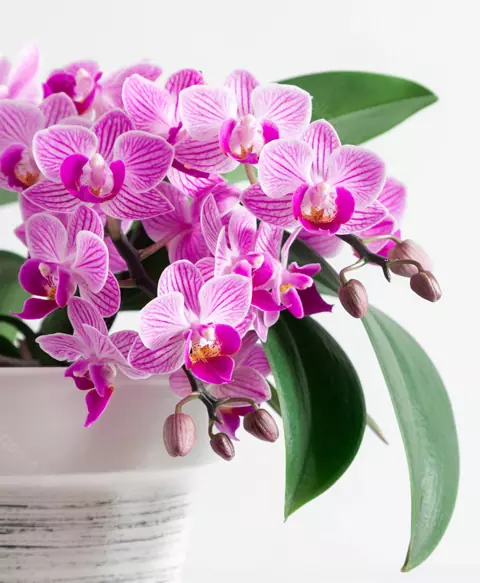Orchids are a large family of flowering plants. More than 25,000 species of orchid varieties are wide spread throughout the world, thriving in cold, intermediate or warm climatic conditions. The majority of orchid species are found in the tropical forests. They are generally epiphytic or lithophytic plants, which need only bare minimum of space and fertilization. In their natural habitat, they get nutrients from tree debris. This peculiar nature of surviving on bare minimum requirements makes them an appropriate house plant in modern day urban life. Extreme hybridization has created a wide range of stunning color patterns and long lasting flowers and increased flowering cycles. This blessing from Mother Nature can surely instill more vitality to your busy schedule.
The success in growing orchids depends on how well we mimic its natural environment by taking care of the critical aspects below:
- Brightness: 20%-70% of indirect sunlight, depending upon the varieties. As a thumb rule, the ideal color of an orchid green is olive green. As the brightness decreases, it may get more or the dark side. Over brightness may cause yellowing of leaves and burning.
- Temperature: Cold, intermediate, warm climate depending upon the variety. Generally speaking, if you are comfortable in your environment, so will your orchids be.
Cool: 15-22 degree
Cool to Intermediate: 23-28 degree
Warm to Intermediate: 25-33 degree
A difference of 5-10 degree Celsius of temperature between day and night will enhance the possibility of flowering. If the temperature is high, we should ensure high humidity and air circulation around the plant.
- Humidity: Normally 60-80% depending on the variety.
- Watering: As and when required, depending on the variety. Water it thoroughly, but ensure that is at least 80% dry before next watering.
- Potting Medium: Various potting media like coconut husk, coal, lava rock, clay balls, sphagnum moss, tree bark and wood mount can be used.
- Fertilization: NPK 19:19:19, 2gms per liter, weekly once. You can also use common organic fertilizers but it should be 8-10 times diluted and filtered before spraying.
- Pest Control: Organic pesticides can be used as and when required in half the concentration prescribed for normal usage. Regular use of pesticides can cause adverse effects as the pests may develop natural resistance against its application.
More details of the above aspects pertaining to specific varieties will be shared soon in this blog.
**************************HAPPY ORCHIDING! **************************


